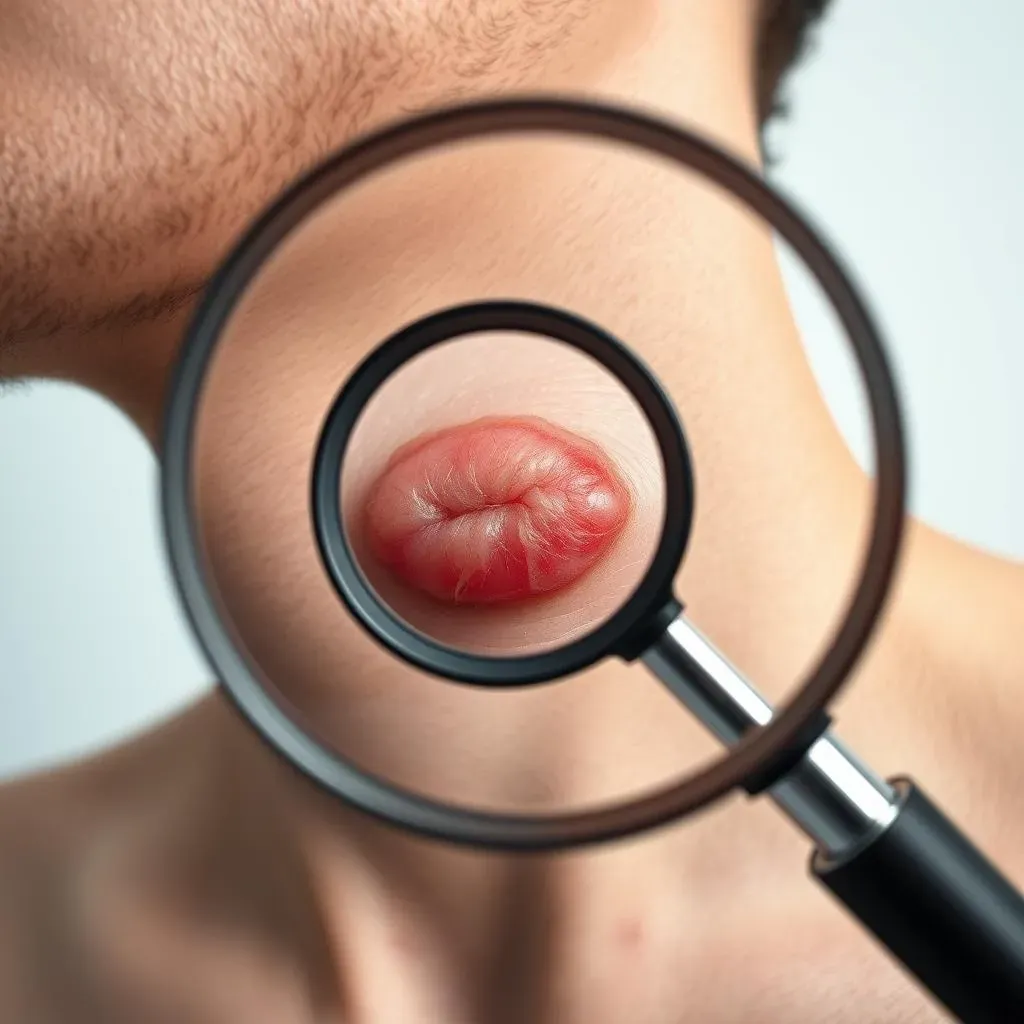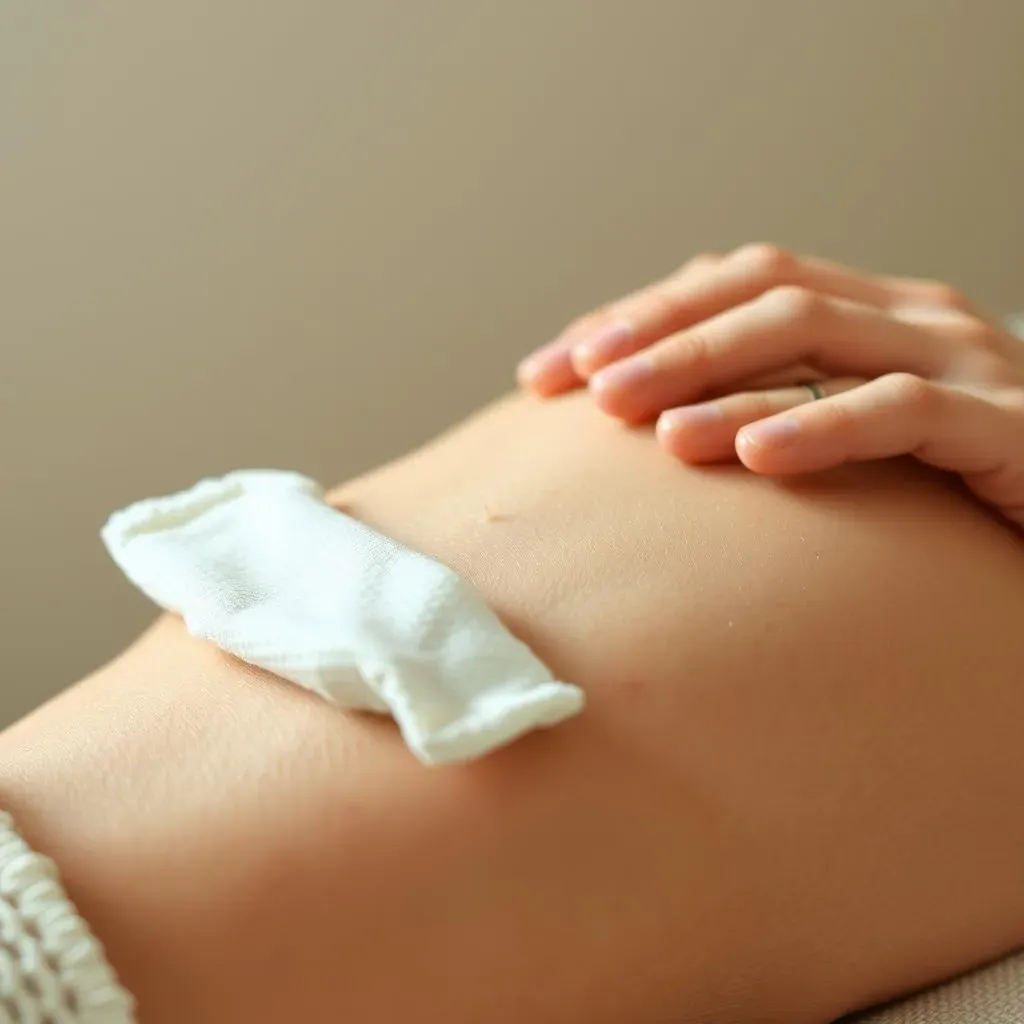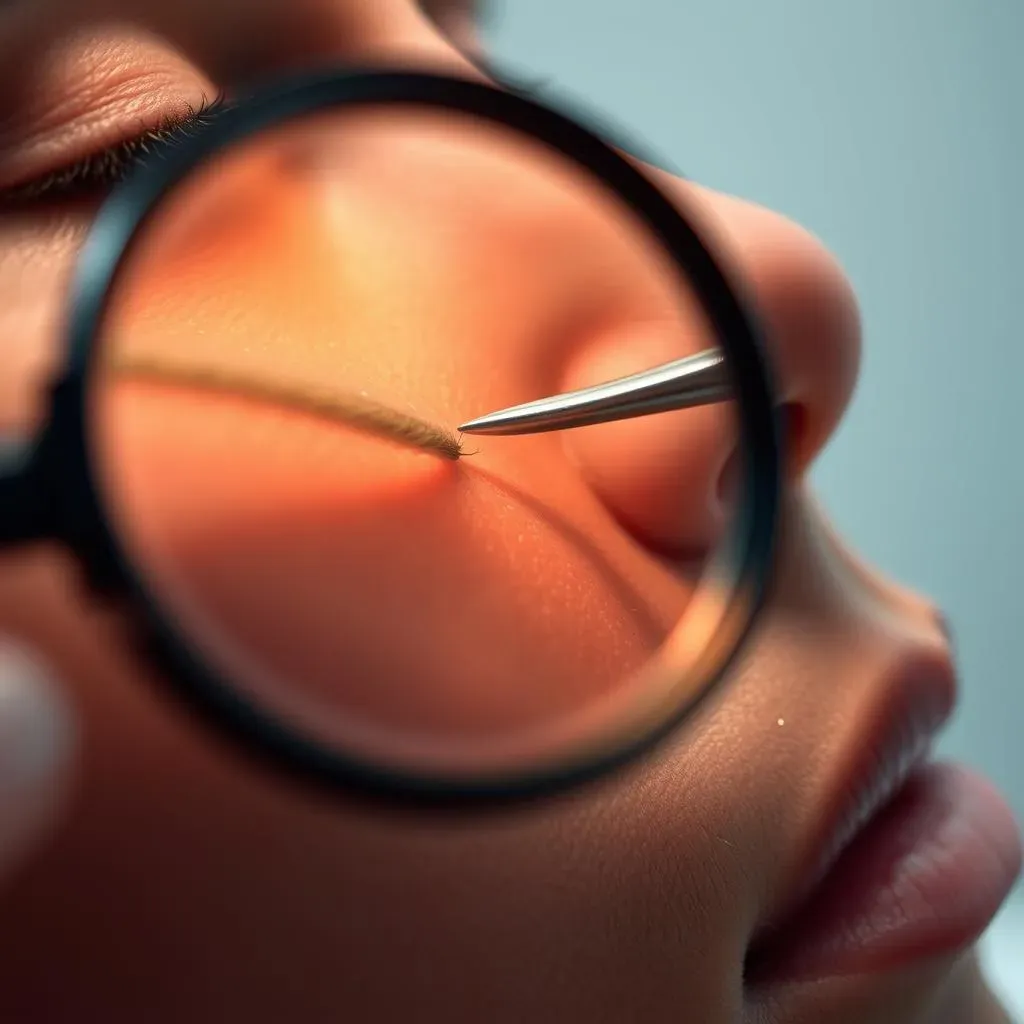Table of Contents
Ingrown hairs can be a frustrating and painful problem for many individuals, particularly those with curly or coarse hair. Removing ingrown hairs is not just about alleviating the discomfort, but also about preventing potential infections and scarring. If you're struggling with ingrown hairs, you're not alone. This article is designed to guide you through the process of removing ingrown hairs, understanding their causes and symptoms, and exploring the various treatment options available. From home remedies to professional solutions like laser hair removal, we'll delve into the most effective methods for removing ingrown hairs and preventing their recurrence. Whether you're looking for immediate relief or long-term solutions, this comprehensive guide will equip you with the knowledge you need to take control of your skin health. By the end of this article, you'll be well-versed in the best practices for removing ingrown hairs and maintaining healthy, smooth skin.
Understanding Ingrown Hairs: Causes and Symptoms

Understanding Ingrown Hairs: Causes and Symptoms
Ingrown hairs occur when a strand of hair grows back into the skin instead of outward, often causing inflammation, redness, and discomfort. This condition can affect anyone, but it's more common in individuals with curly, coarse, or thick hair. The primary cause of ingrown hairs is the way hair is removed. Shaving, waxing, and tweezing can all lead to ingrown hairs, as they can cause the hair to break off below the skin surface, leading it to grow back into the skin.
Symptoms of ingrown hairs include small bumps or nodules on the skin, which can be painful to the touch. The affected area may also become itchy, red, and inflamed. In severe cases, ingrown hairs can become infected, leading to pustules or abscesses. Understanding these symptoms is crucial for early detection and treatment, which can help prevent complications and promote healthy skin.
Cause | Symptom | Complication |
|---|---|---|
Improper shaving techniques | Painful bumps | Infection |
Waxing or tweezing | Redness and inflammation | Scarring |
Genetic predisposition | Itching and irritation | Abscesses |
Diagnosing ingrown hairs typically involves a physical examination and a review of the individual's hair removal habits. In most cases, ingrown hairs do not require medical attention and can be treated at home. However, if the condition persists or worsens, it's essential to consult a healthcare professional for further guidance and treatment.
- Avoid tight clothing that can irritate the skin
- Exfoliate the skin to remove dead skin cells
- Use warm compresses to bring the ingrown hair to the surface
Removing Ingrown Hairs: Treatment Options and Home Remedies

Removing Ingrown Hairs: Treatment Options and Home Remedies
Home Remedies for Ingrown Hairs
Removing ingrown hairs can be done through various methods, ranging from simple home remedies to professional treatments. One of the most effective home remedies is applying a warm compress to the affected area. Soaking the skin in warm water helps to soften the hair follicle, making it easier for the ingrown hair to come out. Another method is using exfoliating products that contain alpha-hydroxy acids (AHAs) or beta-hydroxy acids (BHAs), which help to remove dead skin cells and bring the ingrown hair to the surface.
For those who prefer natural remedies, tea tree oil has antibacterial properties that can help prevent infection and promote healing. Aloe vera gel can also be applied to reduce inflammation and soothe the skin. It's essential to be patient and gentle when trying to remove an ingrown hair, as forcing it can lead to further irritation and scarring.
Remedy | Benefits | Precautions |
|---|---|---|
Warm Compress | Softens hair follicle, promotes healing | Avoid using boiling water |
Exfoliating Products | Removes dead skin cells, brings hair to surface | Use as directed, avoid over-exfoliating |
Tea Tree Oil | Antibacterial, prevents infection | Dilute with carrier oil, patch test |
Over-the-Counter and Prescription Treatments
For more severe cases of ingrown hairs, over-the-counter (OTC) treatments can provide relief. Topical creams and gels containing hydrocortisone can reduce inflammation and itching. For ingrown hairs that are infected, antibiotic ointments may be necessary to prevent further infection. In some cases, prescription-strength retinoids can be used to help the ingrown hair exit the skin.
It's crucial to follow the instructions provided with any OTC or prescription medication and to consult a healthcare professional if symptoms persist or worsen. Some individuals may also find relief through oral antibiotics if the ingrown hair becomes severely infected.
- Hydrocortisone cream for inflammation
- Antibiotic ointment for infected ingrown hairs
- Retinoids for promoting hair exit
- Oral antibiotics for severe infections
Professional Removal and Advanced Treatments
In cases where ingrown hairs are persistent or severe, professional removal may be necessary. A dermatologist or healthcare provider can use a sterile needle to carefully bring the ingrown hair to the surface. For those looking for a more permanent solution, laser hair removal can significantly reduce the occurrence of ingrown hairs by targeting the hair follicle and preventing future growth.
Laser hair removal, offered by clinics like Hairawaybylaser.com, uses advanced technology to selectively target and remove unwanted hair. This method is especially beneficial for individuals with curly or coarse hair, as it reduces the risk of ingrown hairs and leaves the skin smooth and healthy-looking.
Preventing Ingrown Hairs: Tips and Best Practices for Hair Removal

Preventing Ingrown Hairs: Tips and Best Practices for Hair Removal
Proper Hair Removal Techniques
Preventing ingrown hairs starts with proper hair removal techniques. When shaving, it's essential to wet the skin and use a sharp razor. Dull razors can cause the hair to be cut unevenly, leading to ingrown hairs. Always shave in the direction of hair growth, not against it. Shaving against the grain can cause the hair to become trapped under the skin, resulting in ingrown hairs.
Exfoliating the skin before shaving can also help prevent ingrown hairs. Removing dead skin cells allows the razor to glide more smoothly and reduces the risk of hairs becoming trapped. Using a shaving gel or cream can further help by lubricating the skin and reducing friction.
Shaving Technique | Benefits | Precautions |
|---|---|---|
Shave in the direction of hair growth | Reduces risk of ingrown hairs | Avoid shaving over the same spot multiple times |
Use a sharp razor | Prevents uneven cuts and ingrown hairs | Replace razor frequently |
Exfoliate before shaving | Removes dead skin cells, allows smoother shave | Avoid over-exfoliating |
- Exfoliate 1-2 times a week
- Use warm water when shaving
- Avoid shaving over ingrown hairs
Avoiding Tight Clothing
Tight clothing can irritate the skin and cause friction, which can lead to ingrown hairs. Wearing loose, breathable clothing can help reduce irritation and prevent ingrown hairs. Additionally, avoiding tight underwear or pants can help reduce the pressure on the skin, giving hairs room to grow without becoming trapped.
It's also important to avoid picking or scratching ingrown hairs, as this can further irritate the skin and lead to infection. Instead, apply warm compresses and use gentle exfoliating products to encourage the hair to come to the surface.
Clothing Tips | Benefits | Precautions |
|---|---|---|
Wear loose, breathable clothing | Reduces skin irritation | Avoid tight clothing, especially in sensitive areas |
Avoid picking or scratching ingrown hairs | Prevents infection and further irritation | Apply warm compresses instead |
- Choose cotton underwear
- Avoid synthetic fabrics
- Wear loose pants or skirts
Advanced Solutions for Ingrown Hairs: Laser Hair Removal at Hairawaybylaser.com

Advanced Solutions for Ingrown Hairs: Laser Hair Removal at Hairawaybylaser.com
Laser Hair Removal: A Permanent Solution
Laser hair removal is a revolutionary method for reducing ingrown hairs. By targeting the hair follicle, laser treatment can permanently reduce hair growth, minimizing the risk of ingrown hairs. This advanced technology is especially beneficial for individuals with curly or coarse hair, as it can help prevent the hair from curling back into the skin.
At Hairawaybylaser.com, state-of-the-art laser hair removal is provided by experienced professionals. Their technology is designed to selectively target unwanted hair, leaving the surrounding skin unharmed. With minimal discomfort and no downtime, laser hair removal is a convenient and effective solution for those seeking smooth, healthy-looking skin.
Benefits of Laser Hair Removal | Results | Precautions |
|---|---|---|
Permanent reduction of ingrown hairs | Smooth, hair-free skin | Avoid sun exposure before and after treatment |
Minimally invasive | Reduced risk of infection and scarring | Follow after-care instructions |
How Laser Hair Removal Works
Laser hair removal works by emitting a beam of light that targets the pigment in the hair follicle. The heat generated by the laser damages the follicle, preventing future hair growth. This process is repeated over several sessions to ensure optimal results, as hair grows in different cycles.
Before undergoing laser hair removal, it's essential to avoid waxing, tweezing, and tanning. These activities can interfere with the treatment's effectiveness. It's also crucial to shave the area before each session to allow the laser to target the hair follicle more effectively.
- Avoid waxing and tweezing for 4-6 weeks before treatment
- Refrain from tanning and excessive sun exposure
- Shave the area 1-2 days before each session
Aftercare and Maintenance
After laser hair removal, the skin may be sensitive for a few days. It's essential to follow the aftercare instructions provided by the technician to ensure proper healing and minimize the risk of complications. This includes avoiding strenuous activities, direct sun exposure, and certain skincare products.
Maintenance is key to maintaining the results of laser hair removal. Touch-up sessions may be necessary to target any remaining hair follicles. Additionally, practicing good skincare routines, such as exfoliating and moisturizing, can help keep the skin healthy and prevent ingrown hairs.
Post-Treatment Care | Benefits | Precautions |
|---|---|---|
Avoid direct sun exposure | Reduces risk of complications | Use sunscreen with SPF 30 or higher |
Use gentle skincare products | Promotes healing and soothes the skin | Avoid harsh exfoliants |
Conclusion: Taking Control of Ingrown Hair Removal
Removing ingrown hairs requires a combination of proper hair removal techniques, consistent skincare routines, and patience. By understanding the causes and symptoms of ingrown hairs, exploring treatment options, and adopting preventive measures, you can reduce the occurrence of ingrown hairs and promote healthy, radiant skin. Remember, it's essential to approach ingrown hair removal with a holistic mindset, considering both short-term relief and long-term solutions. Whether you opt for home remedies, professional treatments, or advanced technologies like laser hair removal at Hairawaybylaser.com, the key to success lies in persistence and dedication to your skincare regimen. With the right strategies and mindset, you can say goodbye to the discomfort and embarrassment of ingrown hairs and hello to the smooth, confident you.
